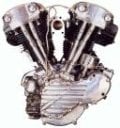So I made it !!!
I was actually on the perfectly right track, but my math was wrong,
Also the frequency I measured from the NMB PSU must have been wrong.
The mistake I made:
FAN generates frequency of 2 clicks per rotation with 50% duty cycle.
What I did wrong, is that I calculated required frequency per RPM, and not rotation - which is a difference between say 30 RPS and 1800 RPM.
That led me to think I need frequencies in 4000-6000HZ range, while all I needed was anything above 60Hz (>60Hz is universal for all the Fans in Fuel).
And indeed 5KHz was totally right to give me 60-130000 RPM, because this is the correct value.
63Hz should give this much:
(63/2) * 60 # (number of rotations per second / 2 clicks per second) * (60 seconds in a minute)
= 1890 RPM
At roughly 63 Hz, I get 1753 RPM reading which makes it more of 58Hz, but that's fine as long it's above the 1600 threshold.
What led me to finding out my mistake - I bought a couple fan's (to optionally replace the ones in Fuel), and checked their signal from Tacho.
There are multiple ways to create square wave generator, I did mine in two: using NE555 (+ 2 resistors, 2 capacitors and zener diode to limit the voltage), and using 70HC14 (schmitt trigger inverter, + 1 resistor, 2 capacitors and zener diode).
NE555 gives me much more "square" wave but that doesn't matter much.
Parts:
NE555:
1 * NE555
1 * 1800 Ohm
1 * 470 KOhm
1 * 0.022 uF
1 * 0.01 uF
This yields 69.6 Hz at 50.095% duty cycle
(Schematic here:
http://www.royalrife.com/555_calculator.html
)
Inverter:
1 * 74HC14 (I used Texas Instruments, another one from Hitachi HD7414P didn't want to work for me).
1 * 470 KOhm
1 * 0.01uF
1 * 0.047 uF
1 * 3.9V Zener diode
(Schematic here:
http://www.national.com/assets/en/board ... rguide.pdf
- this is actually schematic of the whole evaluation board of LN81 - which has the same function as DS1780)
The Inverter-based solution has an advantage (5 of them in fact), with 1 chip you can generate 6 independent square waves - just in case if somebody wanted to fool the Fuel in regards to other fan's

, another minor advantage of inverter-based is that you don't need to worry about duty cycle, it's always 50%.
The generators are powered from 5V (NOT 12V), I used 5V from pin 17.
I DID NOT bother using FANC pin - this is NC on my adapters, maybe in the future I could make the oscillator adjust frequency to the signal from FANC - but that's not necessary for anything - would make sense only if Fuel actually verified feedback while controlling Fan speed...
Also, There is NO FAN MONITORING in the ATX PSU AT ALL - if it fries, you're on your own, (but you have working adapter and can simply replace the PSU with another one

).
While playing, I fried 2 fan's - turns out that tacho logic is very sensitive to sloppy people who forget to swap the pins around - but I had 3 more which worked well.
I bought:
2* Enermax UCTB8 1600 RPM (80mm)
2* Omega Typhoon CFZ-60F 3000 RPM (60mm)
1 * some kind of used noname (80mm)
I actually did replace XIO fans with Omega's but had to revert the process, since those spinned at some 1450 RPM's which was below the threshold (I want to achieve perfect result with no env off/on tricks).
Enermax fan didn't turn out good either, as it spins at 1100 !!! which is whole 20 RPM's below the threshold

I'll keep looking for more suitable fans.
Now a very interesting fact, the reason I did manage to get 2000+ RPM's at over 20KHz frequency - (this should not be possible - as 20Khz would mean some 600k RPM's),
The DS1780 uses internal 22.5KHz clock to drive the counter - somehow I must have managed to get close to sync with that clock and it started to think the periodical going out-of-sync was the real signal

.
That means the maximum theoretical fan speed that DS1780 could measure would be < 600000 RPM's - useless for Jet engines

Interesting huh ?
---
Here is a "screenshot"

Code:
Select all
Description State Warning RPM Current RPM
-------------- ---------- ----------- -----------
FAN 0 EXHAUST Active 920 0
FAN 1 HD Active 1560 0
FAN 2 PCI Active 1120 0
FAN 3 XIO 1 Active 1600 0
FAN 4 XIO 2 Active 1600 0
FAN 5 PS Enabled 1600 1753
And below are the pictures.


 , another minor advantage of inverter-based is that you don't need to worry about duty cycle, it's always 50%.
, another minor advantage of inverter-based is that you don't need to worry about duty cycle, it's always 50%.




 ]
]



 ...
...

 -
-










